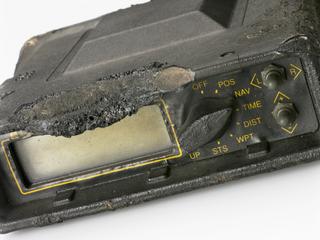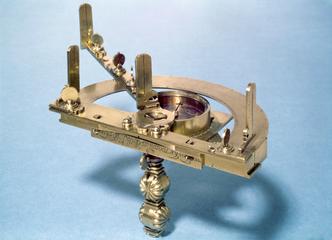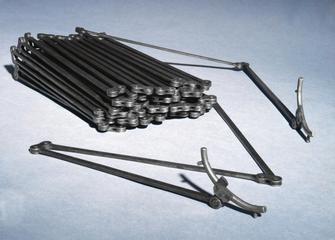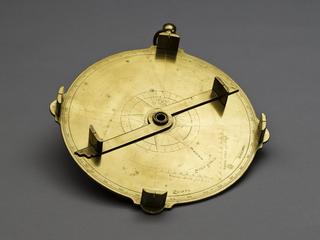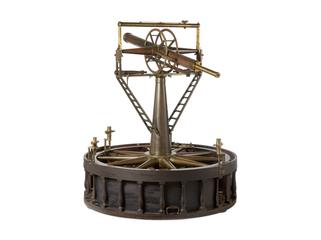
Altazimuth theodolite, British, 1725-1747
- maker:
- Jonathan Sisson


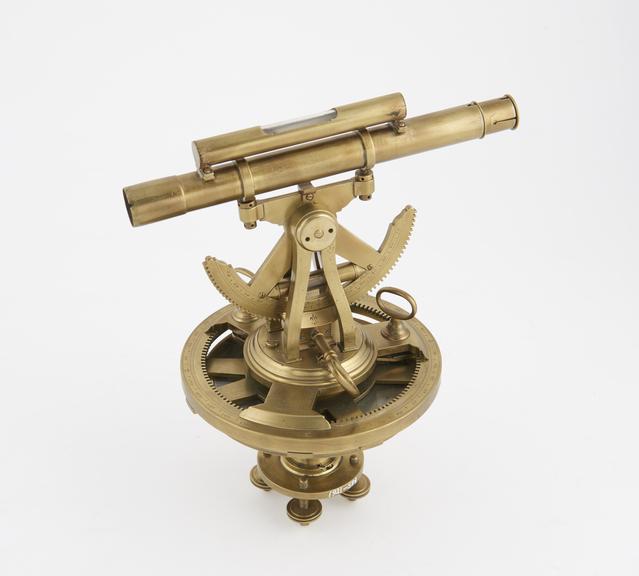

Altazimuth theodolite, 4 1/2-inch, by Jonathan Sisson, Styrand, London, England, 1725-1747
Theodolites, such as this example made by J Sisson, are instruments for measuring angles both in the horizontal and the vertical and have been widely used in surveying since the 16th century. Sisson in 1720 introduced the telescope and cross-hairs. This later example includes bubble levels and a better method of setting the vernier.
It is logical and very convenient in practice to combine in one instrument the functions of measuring altitude and azimuth, i.e. vertical and horizontal angles. The first instrument of this type in Europe was probably Martin Waldseemuller's 'polimetrum', illustrated in a work published in 1512. Islamic instruments based on the same principle were used even earlier than this.
Early thoedolites employed open sights and it was not until the end of the seventeenth century or the early years of the eighteenth century that the telescope was applied to this instrument, and not until 1720 that a really practical theodolite incorporating both telescope and cross hairs was constructed by the instrument maker Sisson.
